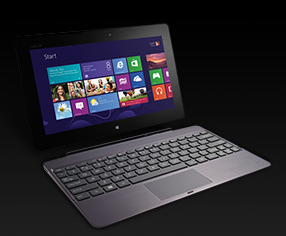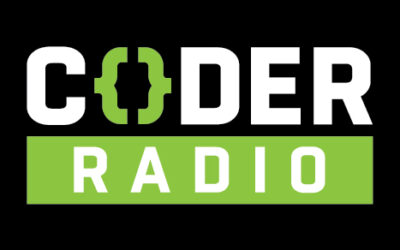 Coder Radio listeners will know that I recently got a new tablet to add to my growing collection of devices: Asus’ Vivo Tab RT. Android fans will take a look at this and be reminded of the Transformer Prime and for good reason — the Vivo Tab and Prime share some common components, most notably the case and they are both designed to be used with their (depending on your retailer) bundled keyboard dock. Overall, my experience has been pretty good.
Coder Radio listeners will know that I recently got a new tablet to add to my growing collection of devices: Asus’ Vivo Tab RT. Android fans will take a look at this and be reminded of the Transformer Prime and for good reason — the Vivo Tab and Prime share some common components, most notably the case and they are both designed to be used with their (depending on your retailer) bundled keyboard dock. Overall, my experience has been pretty good.
The Good: Like its Android cousin the Vivo RT holds a charge for a little over a day under normal usage, so power management isn’t something you are going to need to worry about much. The keyboard dock is phenomenal and I find myself replying to fast e-mails, coding small scripts, taking notes, and editing blog posts on the Vivo all of the time. In almost every case, it has become the device I grab to do some quick typing. The app selection is weak — there is simply no debating that point. However, the Windows RT ecosystem is still new and there are some standout apps on the platform: Tweetro+ and Notepad RT have become two of my most commonly used RT apps. On the games side there is, as on iOS and Android, a lot of junk, but the good games are simply incredible. The killer feature for game developers targeting the Vivo and Windows RT as a whole? Xbox Live achievements. Rocket Riot 3D is a great example of one such game and has fast become a favorite of mine.
The Bad: Despite the hours I have put into Rocket Riot and a few other games, the Vivo is in many ways a work device at its heart. Reading any sort of longform content is awkward due to the width of the device. Additionally, though the screen is adequate, it does leave something to be desired for long form reading when compared to the “retina” iPad. The app ecosystem, though it has its gem, is weak and is likely to stay that way for a while. The trend seems to be that developers who are interested in the platform are just re-releasing titles from other platforms (iOS mostly). I did run into one hardware issue during my usage of the device; if I detach the keyboard while apps are in the foreground the device seems to kernel panic (for lack of a more accurate term) and I have to manually restart it via the power button. Finally, Office works well but feels a bit awkward as does the entire desktop side of the device. I find myself wishing that the Office team had done a scaled down port to “Modern UI” (the UI formerly known as “Metro”) and kept the user experience pure.
Overall, Asus has done an admirable job and most of the issues I’ve experienced are with Windows RT and caused by how new the platform is not by any defect in the device. If you are interested in a Windows RT tablet, I recommend you look at this one before blindly purchasing a Surface. Questions? Comments? Find me on Twitter and Google+. This post was brought to you by Code Journal and Fingertip Tech, INC.






